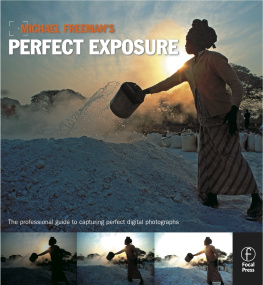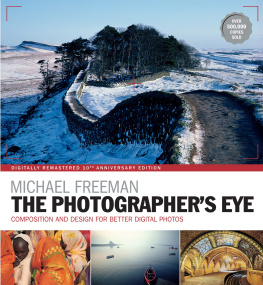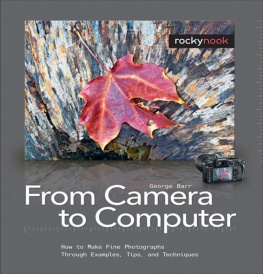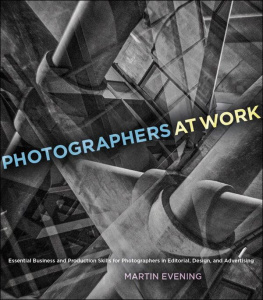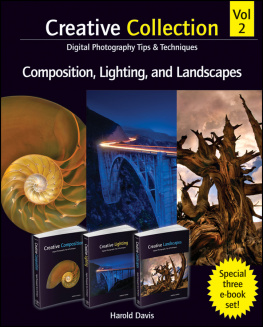William Neill - The Photographers Portfolio Development Workshop: Learn to Think in Themes, Find Your Passion, Develop Depth, and Edit Tightly
Here you can read online William Neill - The Photographers Portfolio Development Workshop: Learn to Think in Themes, Find Your Passion, Develop Depth, and Edit Tightly full text of the book (entire story) in english for free. Download pdf and epub, get meaning, cover and reviews about this ebook. year: 2022, publisher: Rocky Nook, genre: Art. Description of the work, (preface) as well as reviews are available. Best literature library LitArk.com created for fans of good reading and offers a wide selection of genres:
Romance novel
Science fiction
Adventure
Detective
Science
History
Home and family
Prose
Art
Politics
Computer
Non-fiction
Religion
Business
Children
Humor
Choose a favorite category and find really read worthwhile books. Enjoy immersion in the world of imagination, feel the emotions of the characters or learn something new for yourself, make an fascinating discovery.

- Book:The Photographers Portfolio Development Workshop: Learn to Think in Themes, Find Your Passion, Develop Depth, and Edit Tightly
- Author:
- Publisher:Rocky Nook
- Genre:
- Year:2022
- Rating:4 / 5
- Favourites:Add to favourites
- Your mark:
The Photographers Portfolio Development Workshop: Learn to Think in Themes, Find Your Passion, Develop Depth, and Edit Tightly: summary, description and annotation
We offer to read an annotation, description, summary or preface (depends on what the author of the book "The Photographers Portfolio Development Workshop: Learn to Think in Themes, Find Your Passion, Develop Depth, and Edit Tightly" wrote himself). If you haven't found the necessary information about the book — write in the comments, we will try to find it.
Learn to edit, organize, and present your best workand become a better photographer in the process!
Once a photographer has learned the fundamental techniques of photographythe basics of exposure, composition, and focustheir work often improves over the course of a few months or years. The world is full of wonders to photograph, and photographers can be pulled in many directions, excitedly chasing the light and the moment. This approach can certainly yield wonderful photographs, but over time the photographers progress often begins to slow, and eventually, it can stop altogether.
The reason for this is simple: creativity begins with image-making, but true progress comes with learning to edit and organize your work in ways that reflect your unique style and perspective, ways that offer you insight into how you can improve your work moving forward. In short, the key to becoming the best photographer you can be is to create an ongoing portfolio (or multiple portfolios) of your work.
Based on an eight-week course taught by renowned photographer and author William Neill, The Photographers Portfolio Development Workshop provides the tools and skills you need in order to create a methodology that allows you to create a tightly edited portfolio of work, no matter your end goal: a box of prints, a book, an online presentation or website, or even a gallery exhibit.
A portfolio is simply a collection of photographs with a consistent theme and consistent quality. In developing such a body of work, you will learn what your specific passions are, find focus for your work, and begin the iterative process of creating better and better photographs over time. By constantly working within a feedback loopwhere you carefully assess and edit your images, note and learn from mistakes, then go out and create more photographsyoull develop a portfolio that is constantly gaining in strength, quality, and impact. Its no surprise that youll also become a much better photographer.
No matter the photographic genre you work in, this book will teach you to objectively assess your work on both technical and aesthetic levels, establish a personal standard of quality, focus your efforts on new work, and become a better photographer. The book features eight lessons, along with assignments at the end of each lesson to propel you and your work forward. Throughout, Neill uses his own photographs to illustrate the process he has used for years to create multiple portfolios and books.
TABLE OF CONTENTS
Lesson 1: Find Your Focus
Lesson 2: Thinking in Themes
Lesson 3: Editing on a Technical and Aesthetic Level
Lesson 4: Grouping by Quality
Lesson 5: Adding New Work
Lesson 6: Improving Your Portfolio
Lesson 7: Where You Can Go From Here
Lesson 8: Putting It All Together
William Neill: author's other books
Who wrote The Photographers Portfolio Development Workshop: Learn to Think in Themes, Find Your Passion, Develop Depth, and Edit Tightly? Find out the surname, the name of the author of the book and a list of all author's works by series.

